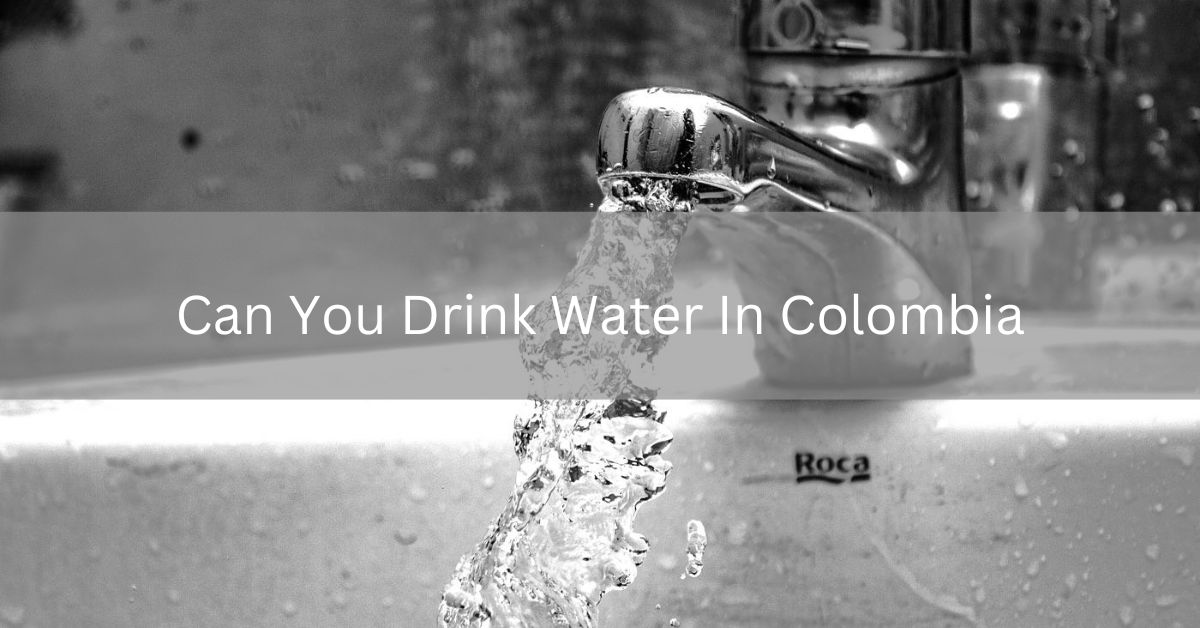Colombia, with its stunning landscapes, rich biodiversity, and vibrant culture, is a traveler’s paradise. From the bustling streets of Bogotá to the pristine beaches of the Caribbean coast, the country offers a wealth of experiences waiting to be explored.
Amidst the excitement of discovering Colombia’s treasures, one essential aspect that travelers must consider is water safety. In this comprehensive guide, we delve into the complexities of water quality in Colombia, providing in-depth insights, practical advice, and region-specific recommendations to ensure safe hydration throughout your journey.
Understanding Water Quality in Colombia:
Colombia has made significant strides in improving water quality and access to clean drinking water over the years. Major cities and urban centers typically have well-developed water treatment infrastructure that meets international standards.
However, challenges persist in rural areas and remote regions, where access to clean water may be limited due to factors such as inadequate infrastructure and environmental contamination.
Water Safety Measures Across Regions:
- Urban Centers: Cities like Bogotá, Medellín, and Cali boast robust water treatment facilities that provide residents and visitors with access to safe tap water. These cities prioritize water quality and adhere to stringent regulatory standards to ensure public health.
- Rural and Remote Areas: In contrast, rural communities and smaller towns may face challenges in maintaining consistent water quality. While efforts are underway to improve infrastructure and access to clean water in these regions, travelers should exercise caution and be prepared to rely on alternative sources of drinking water.
Factors Influencing Water Quality:
Several factors can affect water quality in Colombia, including:
- Environmental Pollution: Industrial activities, agricultural runoff, and urbanization can contribute to water pollution, impacting both surface water and groundwater sources.
- Infrastructure Limitations: Aging infrastructure, inadequate sanitation systems, and limited resources in rural areas can affect water treatment and distribution.
- Geological Factors: Natural contaminants such as mineral deposits and volcanic activity can influence water composition, leading to variations in taste and quality.
Practical Tips for Ensuring Water Safety:
- Bottled Water: Opt for sealed bottled water from reputable brands, especially when traveling to remote areas where tap water quality may be uncertain.
- Boiling Water: When in doubt, boil tap water for at least one minute to eliminate potential pathogens and make it safe for consumption.
- Water Purification Methods: Consider carrying water purification tablets, portable filters, or UV purifiers for outdoor adventures or areas with questionable water quality.
- Ice and Raw Foods: Exercise caution when consuming ice in drinks and raw foods washed with tap water, as they may pose a risk of contamination.
- Hydration Practices: Stay hydrated by carrying a refillable water bottle and regularly replenishing it with safe drinking water, especially in Colombia’s warm and humid climate.
FAQ’s About Can You Drink Water In Colombia
1. Is tap water safe to drink in Colombia’s major cities?
Yes, tap water in cities like Bogotá, Medellín, and Cali is generally safe as they have robust water treatment facilities.
2. What should I do if I’m traveling to rural areas or remote regions?
Exercise caution and opt for bottled water or purify tap water by boiling it for at least one minute.
3. What factors influence water quality in Colombia?
Environmental pollution, infrastructure limitations, and geological factors can impact water quality.
4. How can I ensure water safety while traveling in Colombia?
Choose bottled water, boil tap water, or use purification methods like tablets or filters.
5. Are there specific regions in Colombia where water safety is a concern?
Rural areas and smaller towns may have less reliable access to safe drinking water, so take precautions.
6. What alternatives can I use to ensure water safety if bottled water isn’t available?
Consider using water purification tablets, portable filters, or UV purifiers to make tap water safe.
7. Should I be concerned about ice in drinks and raw foods washed with tap water?
Yes, be cautious as ice and raw foods washed with tap water can pose a risk of contamination.
8. What should I do if I suspect I’ve consumed contaminated water?
Monitor your health for symptoms of waterborne illnesses and seek medical attention if necessary.
9. Can I trust the water quality at hotels and restaurants in Colombia?
While many establishments in urban areas have access to safe tap water, it’s wise to exercise caution, especially in rural settings.
10. How important is it to stay hydrated while traveling in Colombia?
Staying hydrated is crucial, especially in Colombia’s warm climate. Carry a refillable water bottle and drink regularly.
11. What role does infrastructure play in water safety in Colombia?
Adequate infrastructure, especially in urban areas, is essential for maintaining water quality through effective treatment and distribution systems.
12. Is traveler’s insurance recommended for medical emergencies related to waterborne illnesses?
Yes, traveler’s insurance can provide coverage for medical expenses and offer peace of mind in case of unexpected health issues.
Conclusion On Can You Drink Water In Colombia
Ensuring safe hydration is essential for travelers exploring Colombia’s diverse landscapes and vibrant culture. By understanding the nuances of water safety across different regions, staying informed about local water quality, and adopting practical precautions, travelers can enjoy their Colombian adventure with confidence. With proper preparation and awareness, you can savor the beauty, flavors, and experiences that Colombia has to offer while prioritizing your health and well-being throughout your journey.
